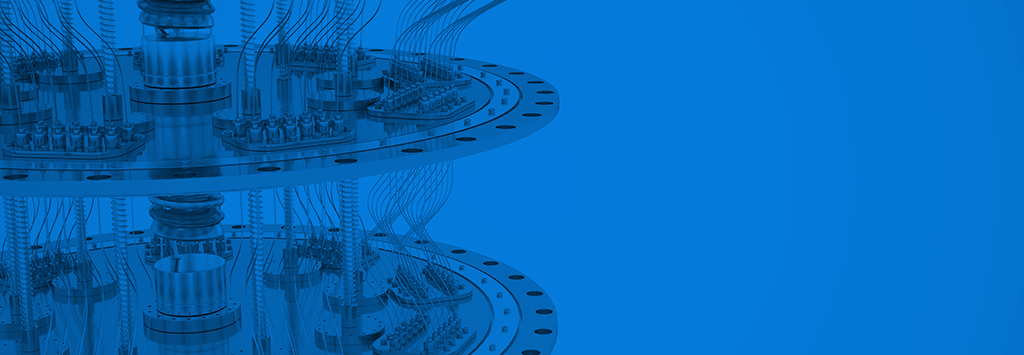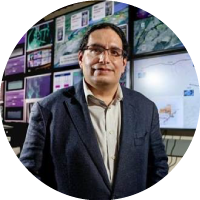
26 Oct 2025
09:00 - 15:45
Quantum mechanics is one of the most successful theories in the history of physics, but is also infamous for its counter-intuitive aspects. Concepts like superposition, represented by Schrodinger’s Cat, or entanglement, characterized by Eistein as “spooky interaction at a distance”, continue to confound and marvel professional physicists and philosophers a century after the theory was first introduced. This gives the field an aura of unapproachability that can make it intimidating for scientists and engineers from other fields to approach.
In spite of its notorious counter-intuitive aspects, quantum superpositions and entanglement are the basis of quantum communication, the part of Quantum Information Science and Technology (QIST) that deals with the distribution of quantum states of light across long-distances. This technology revolution started with “quantum 1.0” technologies such as quantum cryptography systems, entanglement generation sources and quantum memories, which are quantum in nature but can be considered as single quantum devices. Currently, the QIST field is developing “quantum 2.0” network systems, such as quantum repeaters and measurement-device independent quantum networks, which will be the basis of a future quantum Internet.
Demystifying: Quantum – presented by Optica – aims to make the infamously puzzling subject of quantum physics more approachable for scientists and engineers from other fields by introducing the key concepts and vocabulary of quantum mechanics, and explaining how they find applications in next-generation measurement technologies.
Program
The morning session will introduce the core ideas of quantum networks, starting with the fundamental quantum devices and later presenting modern quantum network architectures. In the first session we will introduce the technical aspects required to generate entanglement in the laboratory. The second session will be an introduction to the concept of quantum memories and their use as a fundamental component in advanced quantum networks. In the third morning session we will present different architectures of modern quantum networks together with their applications.
The afternoon sessions will look at specific aspects regarding the constructions of long-distance quantum networks. The first session will look at the quantum enabling systems that allow transport of quantum states over long distances. The second session will look at modern quantum networks, their current status, their applications and the roadmap to build a quantum internet.
Schedule |
Sunday, |
|---|---|
Part One:
|
|
| Introduction to Entanglemenet Generation Systems | 09:00 - 09:45 |
| Introduction to Quantum Memory Devices | 10:00 - 10:45 |
| Introduction to Quantum Network Architectures | 11:00 - 11:45 |
Part Two:
|
|
| Building Experimental Quantum Networks | 14:00 - 14:45 |
| Applications of the Quantum Internet | 15:00 - 15:45 |
Audience
Scientists and engineers from academia or industry with limited or no prior experience with quantum networks who want to better understand these emerging technologies.
Prerequisites
There are no strict prerequisites for the attendees.
Learning Objectives
- Understand the fundamental quantum devices that compose modern quantum networks such as entanglement sources and quantum memories
- Understand how to develop quantum 2.0 quantum network systems
- Anticipate how modern quantum network systems are paving the way for the future quantum internet
About the Optica Demystifying Series
The Optica Demystifying series offers introductions to the topics transforming science and engineering today. The objective is to lower the barriers to entry and get you started in the most exciting tools, techniques and areas of research in optics and photonics. Whether you are just starting your career or well along your path, if you are looking for new opportunities, the leading researchers and great teachers in the Optica Demystifying series will help you take that important first step. Look for Demystifying offerings at your next Optica Event.
Instructor
-

Eden Figueroa
State University of New York at Stony Brook, United States
Prof. Eden Figueroa was awarded his BSc in Engineering Physics and his MSc in Optical Engineering at Monterrey Tech, Mexico in 2000 and 2002 respectively. From 2003 to 2008, he was a PhD student in the Quantum Technology Group of Prof. A. I. Lvovsky at the University of Konstanz in Germany and later at the Institute for Quantum Information Science at the University of Calgary, Canada. His PhD thesis entitled: “A quantum memory for squeezed light” was one of the first experimental implementations of quantum memory for quantized light fields. In 2009, he joined the Quantum Dynamics Group of Prof. G. Rempe at the Max-Planck-Institut für Quantenoptik in Garching, Germany where he worked in implementation of quantum networks utilizing single-atoms trapped in high-finesse optical cavities. Starting in 2013 he has been a Professor and the Group leader of the Quantum Information Technology group at Stony Brook University, where he has developed scalable room temperature quantum memories and entanglement sources, aiming to construct the first working prototype of a quantum repeater network. Since Jan. 2019, Prof. Figueroa is also a joint appointment with the Instrumentation Division at Brookhaven National Laboratories. Prof. Figueroa is developing the New York State Quantum Internet Testbed (NYSQIT) , a first prototype of a quantum network distributing photonic entanglement over long distances. Since Sept. 2023 Prof. Figueroa is the Director of the Stony Brook Center for Distributed Quantum Processing and a Presidential Innovation Endowed Professor.
